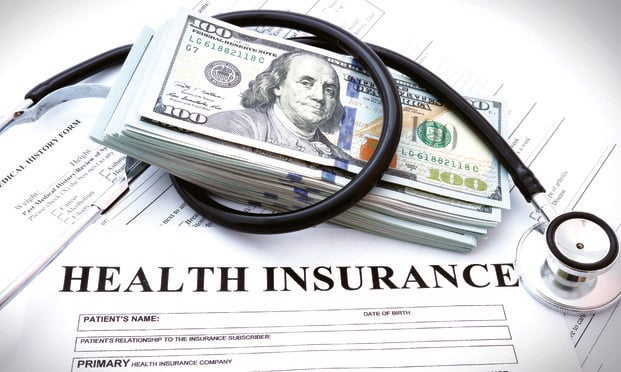
A recent report on the cost of health care for families and individuals reveals a bit of a spike compared to 2021. The increase, according to the 2023 Milliman Medical Index, is within pre-pandemic historical ranges. Still, employers that provide coverage for their workers felt the bite perhaps more than plan members, as the search for top talent incentivized many sponsors to offer more benefits and to pay more of the cost.
That's a high-level distillation of the report by Milliman, a major provider of actuarial, risk management, and technology solutions.
Recommended For You
$31,065: That's Milliman's 2023 estimate for the cost of health care for its hypothetical U.S. family of four covered by an average employer-sponsored preferred provider organization (PPO) plan. Costs for the average person reached $7,221.
For employers that offer health coverage to members, their share of the cost continued to rise.
"We project that employers will subsidize their employees' health care costs by paying 59% of the total cost in 2023. Of the $7,221 total cost for an average person, the employer pays about $4,241," the report said. "Employee contributions were $1,706 per person in 2021 and increased to $1,786 in 2022. Based on early indicators, we project 2023 contributions of $1,847 per average person. As indicated in last year's MMI report, the employer contribution increased materially from 2020 to 2021, due to a return to more normal utilization patterns in 2021 (following a significant reduction during 2020). The employer contribution increased in 2022, and we project the employer contribution will increase again, to $4,241, in 2023."
The talent wars are also pressuring employers to increase their share of the cost of the plan.
"Employers are shouldering almost 60% of this year's cost increase, a sign that increased job mobility and the complexities of remote work are continuing to give employers a good reason to invest in benefits," said Paul Houchens, co-author of the MMI. Employee costs were 4.9% higher for individual coverage in 2022 compared to 2021 while employer costs increased 5.5% during the same period, according to the report. In 2023, Milliman expects that gap to widen with employees contributing 4.4% more and employers 7.2% more.
The pandemic interrupted what had been a promising annual increase trend. That cost fell for the first time in 2020 since MMI began tracking it. But the pressures on health care from the COVID virus ballooned it up to 13% from 2020 to 2021, the report said.
Related: Employers hold the key to unlocking health care affordability
Since then, the average has been 4.8% — "similar to historical MMI trends observed before the COVID-19 pandemic," according to the report. "We project health care costs will grow by approximately 5.6% for the MMI family from 2022 to 2023. As we work our way through 2023, the U.S. health care sector continues to face an elevated level of uncertainty due to evolving macroeconomic conditions."
"Macroeconomic forces are further contributing to the upward direction in health care costs," said Annie Man, co-author of the MMI. "It's not just inflation—it's the supply chain, labor shortages in health care, and a strong job market elsewhere."
Apart from macro factors, Milliman offered details of other drivers of the per-person health care spend by percentage:
- inpatient (17%) and outpatient (29%) costs;
- pharmacy costs (22%);
- professional services (30%); and
- the catch-all "other" (2%).
Cost inflation in hospital and clinic-based care were largely driven by the pent-up demand for medical care from patients who avoided medical facilities during the pandemic. But with pharmacy cost increases, Milliman noted mitigation here, and perhaps hope for further deescalation.
"We are estimating that pharmacy costs for the average person have grown by 10.6% from 2021 to 2022, and by 5.6% from 2022 to 2023. The reduction in pharmacy cost trend may be attributable to brand patent expirations, launch of biosimilars, and increased scrutiny of prescription drug prices due to recent cost pressures," the report said.
One of the co-authors added that another area of pharmacy cost reduction remains untapped.
"Although employee out-of-pocket costs are not affected by pharmaceutical rebates directly, we know this growing component of pharmacy benefit management is a focus area for employers and the health care market," said Deana Bell, co-author of the MMI. "We project rebates to be 25% to 31% of drug costs. If rebates were shared with employees, as some have suggested, the average prescription drug cost for an employee would decrease by about 6%."
© 2025 ALM Global, LLC, All Rights Reserved. Request academic re-use from www.copyright.com. All other uses, submit a request to [email protected]. For more information visit Asset & Logo Licensing.








